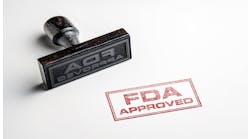A new software could cut drug development costs by more efficiently predicting how molecules behave in liquid solutions.
Created by QUAIL Modeling, which is affiliated with researchers at Purdue University, the software allows chemists to test how molecules interact with liquids, which will give researchers a better understanding of how they will be released into a patient’s bloodstream. The researchers say that so far, testing molecules in liquids is one of the biggest and most unsolvable challenges for quantum chemistry.
Because it can cost between $5-12 billion to develop a new medication, the group says that if the software can lower the cost by even 10 percent, it could make a dramatic impact on the industry.
“When big companies have a molecule to synthesize, they have their own service providers with databases that typically give them about 15-20 different reaction paths that could yield a high concentration, or high purity, of the desired molecule. The high costs come then in thoroughly testing each reaction path. Our technology could narrow down the 20 reactions to much fewer, more accurate candidates, or even identify new reaction paths that are not on the radar of the incomplete databases,” said Tillman Kubis, a co-founder of QUAIL and a research assistant at Purdue.
So far, the company has been testing the product in an academic setting, but it is working on securing partnerships in the industry to continue developing the technology.
Read the full report from Purdue and check out a video of how it works below.



